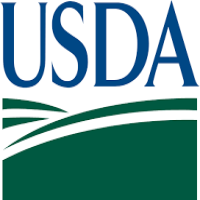Agencies Release RFI on Definition of Ultra-Processed Food

The Trump administration issued a request for information (RFI) regarding ultra-processed foods (UPFs) that includes several food labeling questions.
The joint request from the FDA and the U.S. Department of Agriculture is open until Sept. 23 in Docket No. FDA-2025-N-1793 at www.regulations.gov. The agencies want data to help develop a uniform definition of ultra-processed foods (UPFs) for human food products in the U.S.
“This request for information is yet another step in seeking commonsense ways to foster improved and more informed consumer choice. A unified, widely understood definition for ultra processed foods is long overdue,” said U.S. Secretary of Agriculture Brooke Rollins in announcing the RFI.
“A uniform definition of ultra-processed foods will allow for consistency in research and policy to pave the way for addressing health concerns associated with the consumption of ultra-processed foods,” an HHS announcement said.
The RFI noted “there is no single, universally accepted definition of UPFs, and the definition of such foods has varied considerably over time.” However, “the most common classification, developed by Brazilian researchers in 2009,” classifies foods into four categories:
- Group 1 – unprocessed or minimally processed foods;
- Group 2 – processed culinary ingredients;
- Group 3 – processed foods; and
- Group 4 – ultra-processed foods.
The Brazilian system identifies ultra-processed foods based on multiple factors, including the use of certain ingredients and substances (such as emulsifiers, bulking agents, or thickeners), industrial processing technologies, and sophisticated packaging.
“However, concerns have been raised about the full ability of UPF classification systems to accurately capture the characteristics of UPFs that may impact health,” the RFI said. “For example, on one hand, there is overlap between foods considered to be ultra-processed and foods that are high in added sugars, sodium, and saturated fat, which independently are recommended to be limited by the Dietary Guidelines for Americans, 2020-2025. Foods commonly considered to be ultra-processed encompass a broad range of industrially processed foods, such as soft drinks and many packaged snacks. On the other hand, foods considered to be ultra-processed may also include foods such as whole grain products or yogurt, which are known to have beneficial effects on health and are recommended as part of healthy dietary patterns,” the RFI said.
“It is important therefore to consider unintended consequences of an overly-inclusive definition of UPFs that could discourage intake of potentially beneficial foods,” the RFI said.
In addition, the RFI noted several U.S. states – Alabama, Arkansas, California, Florida, Kentucky, Louisiana, Massachusetts, North Carolina, Pennsylvania, and South Carolina – have sought to establish their own definitions of ultra-processed foods, with varying definitions.
“There is a clear need for a uniform definition of UPFs to allow for consistency in research and policy,” the RFI said.
Labeling Questions Detailed
The RFI noted that FDA-required ingredient labeling provides important information to consumers and lists each ingredient by its common or usual name (21 C.F.R. §101.4(a)(1)). “This ingredient name sometimes provides information on specific forms of the ingredient used, such as ‘flour’ versus ‘whole grain flour.’ Additionally, ingredients are declared in descending order of predominance by weight (21 C.F.R. §101.4(a)), which may help a consumer determine the relative proportion of whole versus processed ingredients. For certain types of ingredients, such as flavorings, colorings, and chemical preservatives, labeling must also provide the function of the ingredient (21 C.F.R. §101.22).” The RFI asked:
- In considering ingredients that appear toward the beginning of an ingredient list, what types of ingredients (e.g., ingredients that may share a similar composition, function, or purpose) might be used to characterize a food as ultra-processed?
- Ingredients that appear toward the end of an ingredient list may contribute minimally to the overall composition and weight of a finished food. What types of these less prominent ingredients (e.g., ingredients that may share a similar composition, function, or purpose) might be used to characterize a food as ultra-processed?
- Ingredients that function as flavorings are either natural flavors or artificial flavors; colorings are either certified or noncertified (21 C.F.R. §101.22). Should these various types of flavors and colors be considered separately when characterizing a food as ultra-processed?
- To what extent, if any, should the relative amount of an ingredient used in a food influence whether the food should be characterized as ultra-processed?
- What, if any, other ingredients or ingredient-related criteria not discussed previously should or should not be used to characterize a food as ultra-processed?
- Is the term “ultra-processed” the best term to use, or is there other terminology that would better capture the concerns associated with these products? If there is another term to consider, please name and define that term and provide specific scenarios and citations (if available) to support its use.
- In considering nutritional attributes, such as information presented on the Nutrition Facts label, to what extent, if any, and how, should nutritional composition or the presence of certain nutrients be incorporated in a definition of UPFs?
- What other attributes, such as energy density or palatability, might be used to characterize a food as ultra-processed? If relevant, please provide suggestions on how these attributes can be measured and/or potentially be incorporated into a definition of UPFs, if they are not readily apparent on the food labeling.
- How might these factors be integrated in the classification of a food as ultra-processed in a way that can be systematically measured and applied to foods sold in the U.S.?
- What considerations should be taken into account in incorporating such a classification in food and nutrition policies and programs?



